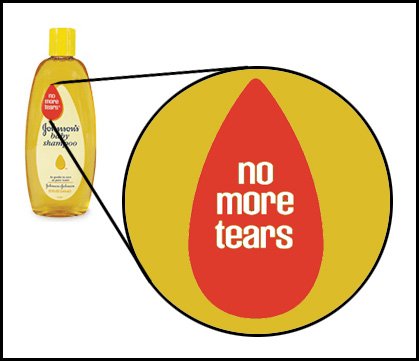Brand Strategy and Competitive Advantage
Brand strategy is a marketing support to a brand by creating customers and positioning the customers. Brand strategy is a step above the brand positioning; it can transform normal business operations into a powerful competitions advantage. It focuses on creating loyal customers to win the competitive edge and to capture the significant market share. Understanding target customer’s tastes, preferences, beliefs, and expectations can help in developing more powerful brand strategies.
A brand is a promise to the customers to deliver the best products and services. While developing brand strategies it is not enough to engage the customers with conversations, but it is to analyze the customer perceptions and diagnose their expectations in order to develop and maintain an authentic relationship.
Small business and startups can also use this strategy which helps in establishing products and building brands to become successful participants in the marketplace while developing branding strategies companies must take crucial decisions, because companies may have to stay with these decisions for a longer time.
Brand Vision

Brand visions is a long-term plan, which is viewed in different short term destinations such as what a brand can do for the firm over the next five years through communicating, attracting creating value, positioning the customers and finally profit contributions in order to fix another long term plan. This strategy provides a vision to the management which forces them to develop a framework by raising various questions such as
- What are the key benefits associated with the product?
- How extent the qualities of the product or services contribute to the brand image?
- Do the product supports the efforts put by the branding strategy?
- Who are the target customers and what is your product’s current brand image?
- What can a brand do to maximize the product image in the minds of target customers?
- How the developing brand strategy helpful to the future product lines and product mix?
Raising such questions by the marketers can act as paths for finding the right solutions among various alternations strategies.
Be creative but stay relevant
The brand is a promise to maintain consistency and to provide better services. Brand strategy always stresses that the delivered message should be creative every time and it should be relevant to the past delivered messages. The flexibility in delivering the creative messages should not disturb the customer’s positive perceptions towards the brands.
For example, life buoy brand delivers brand message i.e. “hygiene and health” in order to make a difference from its competitors. The approach may be different every time but the message is creative, same and relevant.

Connect on the emotional level
The brand strategy aims at customer positioning and expects customer loyalty. Repeated purchase behavior of customers is not only possible by offering products which can satisfy their physical needs, but the thing is to grasp the customer attention and loyalty. Knowing the customer emotional needs can give better results in effective branding. For example, Johnson’s baby products are successful in creating brand positioning by knowing the customer’s emotional needs. In Johnson&Johnson commercials we can see such messages i.e.

- “No more tears formula”
- “Support your growing brand”
- “You can give her so much warm”
- “Johnson’s so much more”
- “Johnson’s brand-creating moments that promote baby’s health and development”
Brand positioning
A brand positioning strategy is used to increase the customer’s positive attitude towards the brand and to maximize the perceived value in the minds of the customers about a brand. Brand positioning is implementing an idea through communicating the unique, sustainable, credible value created by the brand and motivating the customers to become more loyal.
Find appropriate media usually marketers use different brand strategies to promote products and to select appropriate media. Finding the right platform is a unique strategy which can maximize sales; in order to do it, marketers should find the possibilities to convey the brand message on the appropriate platform with specific objectives. Communicating brand message through wrong channels may lead to wastage of time, efforts, and money.

Hence, marketers should select right media for the products such as using television and print media can give desired results with instant impact on wider demographics, here the thing is cost. On the other hand, choosing some media may seem cheap and effective in the long run, but may not give desired results instantly and these are suitable for small and medium scale organizations.
Broadcasting media is suitable for well-existed brands and for promoting product line and product mix. These are more suitable for large-scale organizations and those companies which want to cover the larger demographics.
Measure the strength of brand
Return on investment is the key to measuring the effectiveness and strength of the brand strategies. It is necessary to measure the strength of the brand strategies in order to know how well an organization is executing the strategies. ROI clearly reflects how the customers react to the price changes, offers, and changes in the product features, etc.
By knowing the brand strength it is easy to know the customer’s perceptions and expectations of the brand. Acquired customers, customer’s loyalty, and financial value of brand are also used to measure the strength of the brand.
Avoid short term trap
Brand strategy stresses the long-term goals and objectives, these only can build strong brands. Brands are not built overnight, focusing on short-term tactics may give instant results but cannot lead the organization towards the objectives of the firm. Short term trap such as false promises in the advertisements, maintaining short-term consistency and other short-term tactics to maximize sales can act as brand killers. Such brand strategies cannot help in gaining the customer loyalty in the future also.
Brand contracts
A brand contract is a list of various promises made by the brand which is executed internally, though it is executed internally, but these results can be seen in the marketplace, it is defined and validated externally. In order to maximize the brand image and loyalty, brand contracts must be changed by adding new promises or by deleting the irrelevant promises.
The brand contract can act as a motivator; it forces the employees/managers to become more honest and trustworthy. It guides the employees towards the predetermined and prescribed paths.
Keep your competitors closer

It is very important to know the competitor’s strengths, weaknesses, and their opportunities while developing brand strategies. Even if the product is innovative, technologically advanced and low priced then also a firm can expect competitors with a more superior value proposition.
Competition for an extent could be good for a firm so that it can learn, develop and implement strategies to face the counter-strategies of the competitors. Strategic approaches such as innovative pricing strategies, better cheaper and faster customer services, communicating with better messages, etc can maximize the efficiency, and in turn, it can make it possible to get higher brand loyalty.
Communicate key benefits to the customers

Focus on communicating benefits provided by the brand and its unique features can help in differentiating the products from the other similar products and competitors.
The single idea of which you are doing business should be communicated to the customers in order to make them aware of what a brand can do. A good brand positioning is possible through spreading the brand messages and by communicating the key benefits provided by the brand.
For example
- Disney – Family fun entertainment
- FedEx – Guarantee overnight delivery
- Apple – Innovation
- Toyota – Reliability
- Mc Donald’s – Food and fun




